BY
ABIGAIL HOMES | TEXAS A&M UNIVERSITY WFSC
JOHN DAVIS | TTU TODAY
The term “invasive species” is often heard in scientific fields, but what does it really mean for a plant or animal to be invasive? According to the USDA, an invasive species is a non-native whose introduction to an ecosystem causes economic or environmental harm. A species most frequently becomes invasive after humans transport it, either intentionally or unintentionally, to a new environment where it faces little to no grazing or predation threat and has an abundance of nourishment and space to grow (Kuvlesky et al. 2002). Without predators, diseases, or other constraints to limit its numbers, an invader can aggressively outcompete native species and become extremely difficult to eradicate. Because of this, some researchers believe invasive species may be the single biggest threat to endangered species (Wilcove 1998 & Westbrooks 1998).
Several invasive species have made their way into the Texas grasslands. In the early 20th century, federal and state agencies as well as livestock producers introduced a series of African grasses to the southwestern United States to act as a control on erosion and provide additional forage for livestock. Many of these grasses, such as buffelgrass (Pennisetum ciliare), Kleberg bluestem (Dichanthium annulatum), and King Ranch bluestem (Bothriochloa ischaemum), have become naturalized—meaning they can persist and spread without human intervention—and are increasing across their introduced ranges.
Parasitic Eyeworms
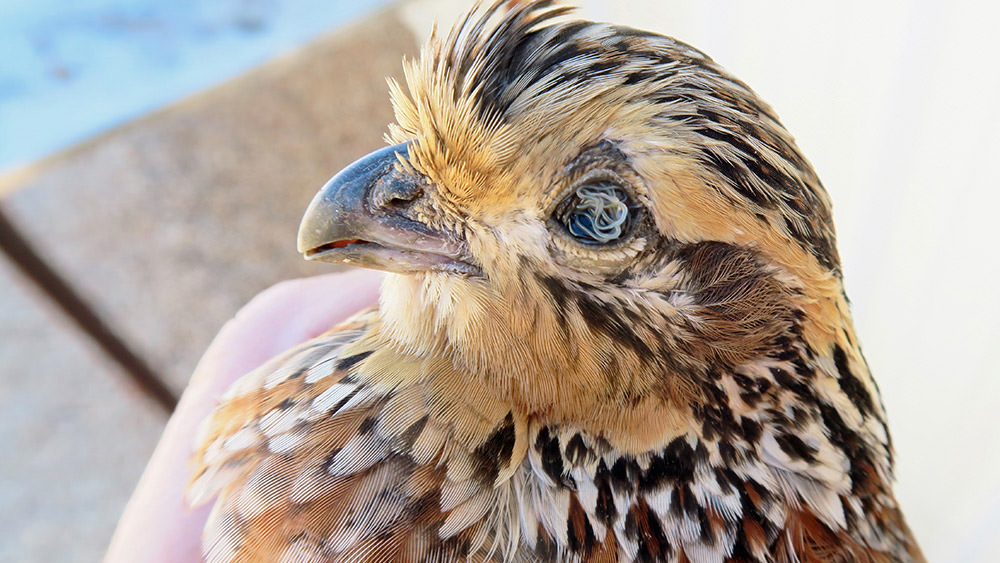
A high-profile parasite has been the subject of much speculation lately related to the plight of northern bobwhites across the quail range (Blanchard et al 2018 and Brym et al 2018). Now, as part of the largest quail disease study ever undertaken in the U.S., scientists at The Institute of Environmental and Human Health at Texas Tech University believe they have found it to be the major culprit (Dunham et al 2014).
Researchers in the Wildlife Toxicology Laboratory necropsied hundreds of birds throughout a 19-million-acre area of land and discovered large numbers of parasitic eyeworms in many of the birds they sampled.These parasitic nematodes ingest tissue from the quail and feed predominantly in ducts behind the eye, where they can cause severe inflammation and edema from their feeding activities (Dunham et al 2016).
If these parasites were in a human and you compared the size of the quail eye to the human eye, it would be like having a worm about the size of a toothpick behind your eye (Dunham et al 2015). Now, imagine having up to 40 or 50 of them in there. This is what researchers have seen this in the wild (Dunham et al 2016) . That could certainly impair your ability to see and cause serious inflammation. And once they’re in there, researchers found that they’re not leaving the eye. They are there to stay. There’s no way for the quail to get these parasites out once they invade the eye.
“These birds need to be 100 percent performance ready to get away from a Cooper’s hawk. If you are a quail in the wild and if you have vision impairment it could negatively impact your ability to get away from a predator” said Dr. Ron Kendall, professor of environmental toxicology at Texas Tech and lead investigator.
“There’s evidence of eyeworms all over the Rolling Plains now (Dunham et al 2016),” he said. “We need a cure; we need a strategy to cure it. So we’re in the process of a major research and development effort to find a remedy. There’s been evidence for some time that eyeworms were in the Rolling Plains, but we didn’t know how to assess their potential impact. Maybe this might provide more interpretation of why we have such large cyclic crashes of quail. We don’t know yet. One thing we do know is that there have been increased reports of quail flying into objects, such as barns and houses. This might answer why.”
<iframe width="581" height="376" src="https://www.youtube.com/embed/0jz-Az19xck" frameborder="0" allow="accelerometer; autoplay; encrypted-media; gyroscope; picture-in-picture" allowfullscreen></iframe>
Stay tuned for updates on the Texas Tech University’s Institute of Environmental and Human Health’s research later this quarter.
Buffelgrass
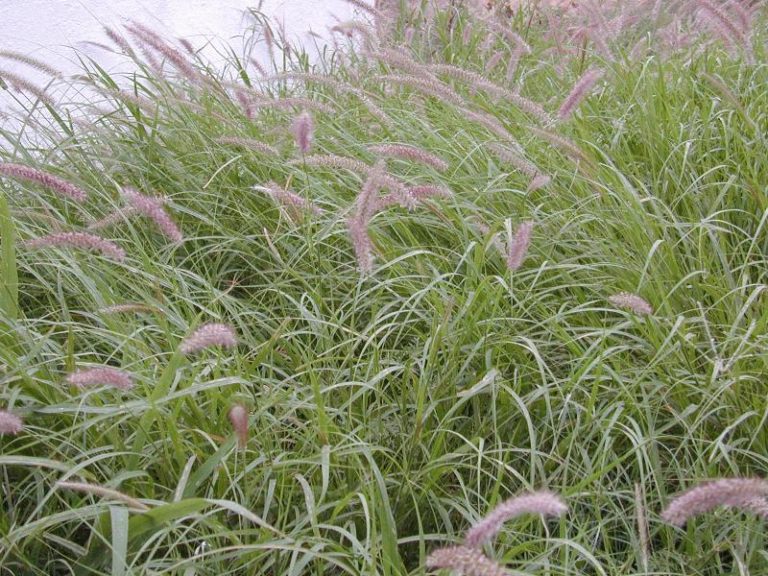
So how have these introduced grasses affected quail and other Texas wildlife that call the grasslands home? All invasive plants share characteristics that allow them to be successful invaders, but these traits can also make their presence harmful to quail populations as they frequently outcompete native species for space, reduce the amount of soil nutrients available, and decrease the overall diversity of the habitat. The invasive grasses often grow so thick that it is difficult for quail to move around or nest (Tjelmeland, 2010 & Kuvlesky et al. 2002). The loss of plant diversity can also lead to a reduced abundance of insects, which are a key food source for nesting hens and their young broods in the early summer months of April through July (Kuvlesky et al. 2002).
Kleberg Bluestem
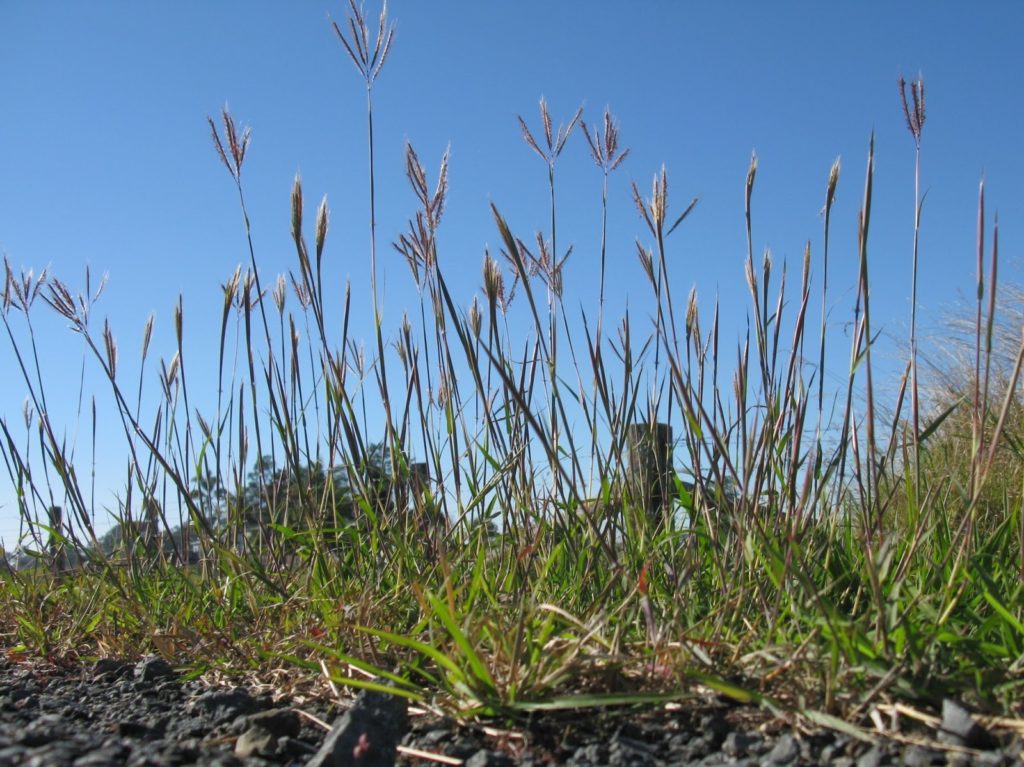
Two major invasive grasses in Texas, buffelgrass and Kleberg bluestem, have another unique trick to give them an edge over native species. They engage in “allelopathy,” the production of chemicals to inhibit the seed germination of other plant species and prevent them from growing in the immediate area (Kuvlesky et al. 2002). In Texas, the Illinois bundleflower (Desmanthus illinoensis) and partridge-pea (Chamaecrista fasciculata) are two forbs that provide excellent food for quail but are susceptible to this seed germination inhibition. In the presence of these invasive grasses, food sources for quail can be diminished. We would be remiss if we stated that non-native grasses are always harmful to quail – there are rare cases in areas with limited ground cover where introduced species might be helpful to quail if they do not completely overtake the normal habitat structure and prevent growth of forbs, but native grass species would still likely suffer and have less space to grow (Kuvlesky et al. 2002). Generally, invasive grasses render large areas of quail habitat unusable and exacerbate the already declining quail populations.
The label of “invasive” is not restricted to plants; there are plenty of animals that fit that designation as well. One example, and one of Texas’ most notorious invaders, is the red imported fire ant (Solenopsis invicta). Red imported fire ants (RIFA) were first introduced to the United States in the 1930s, and by the 1980s their populations had grown to occupy over 3.6 million square miles of the southeast. These aggressive insects can have both direct and indirect effects on the health of northern bobwhite quail (Colinus virginianus), but none of them are positive. RIFA reduce invertebrate populations in areas they occupy and can indirectly cause a shortage of food for quail, but they will also directly attack hatching chicks by delivering painful stings. Fire ant venom has hemolytic, cytotoxic, and necrotic properties which can cause reduced weight gain, reduced survival, and irritation that affects feeding and resting behavior in bobwhite chicks (Allen et al. 2000).
Red Imported Fire Ants
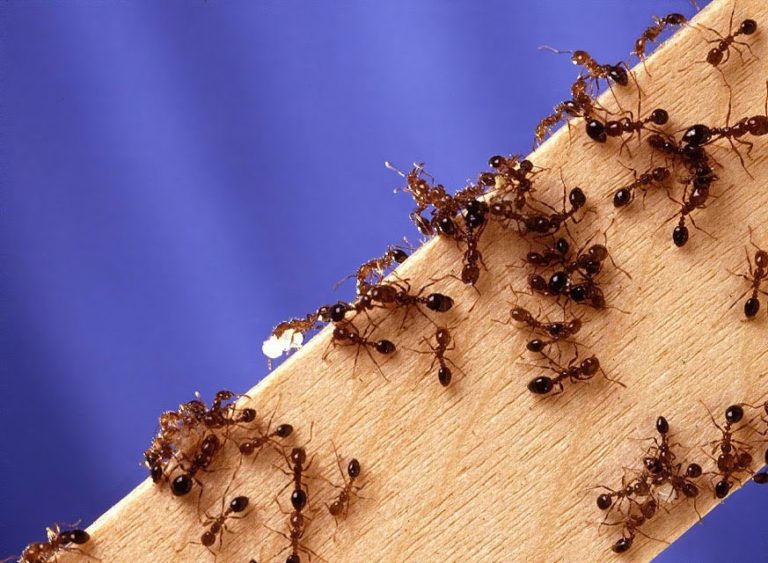
Research has shown that northern bobwhites are less abundant in Texas counties that have been infested with red imported fire ants for many years, and bobwhite densities were nearly four times greater in the southeast before the invasion of fire ants (Allen et al. 1995 & Allen et al. 2000). In these studies, the presence of fire ants was able to explain up to 75% of annual variation in bobwhite abundance (Allen et al. 2000). Unfortunately, red imported fire ants will likely never be eradicated, but the best solution for protecting quail populations from red imported fire ants is to preserve remaining native ant species to stop the spread of the invasive ants (Drees, 2014).
Wild Pigs
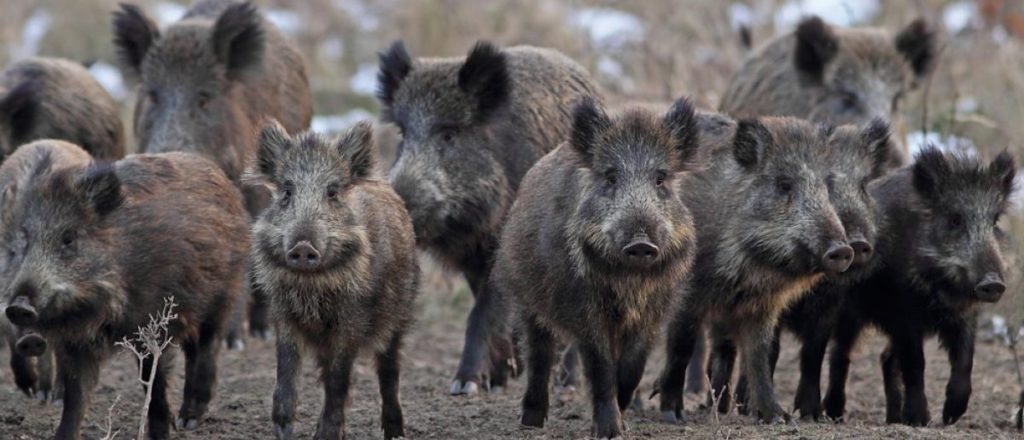
Wild pigs (Sus scrofa) are another invasive animal that is especially prolific in Texas. As “opportunistic omnivores,” they pose a threat to almost any food source they stumble upon, including quail nests. In a 1993 study, between 10-25% of simulated bobwhite nests were depredated by wild pigs. As pig populations have increased almost exponentially over the last 25 years, there is no doubt that their impact on quail has also increased (Timmons, 2011).
Quail populations face countless threats from every direction, including habitat fragmentation, lack of food sources, and lack of cover. The introduction of invasive species presents yet another challenge to their survival—one which they may be ill-prepared to face, given that invasives take over an area rapidly and leave no time for adaptation. Land managers can attempt to mitigate the effects of invasive species on quail populations by managing in favor of native species, treating invasive vegetation chemically or mechanically, and implementing control programs for some of the larger invasive animals, like hogs. The most effective way to combat the negative effects of these species, however, is to prevent invasion before it occurs.
Literature Cited
- Allen, C.R., R.D. Willey, P.E. Myers, P.M. Horton, and J. Buffa. 2000. Impact of red imported fire ant infestation on northern bobwhite quail abundance trends in southeastern United States. Journal of Agricultural and Urban Entomology 17(1): 43-51.
- Allen, C.R., R.S. Lutz, and S. Demarais. 1995. Red imported fire ant impacts on Northern Bobwhite populations. Ecological Applications 5: 632-638.
- Drees, B.M. 2014. Managing red imported fire ants in wildlife areas. Texas A&M AgriLife Extension Service: ENTO-019.
- Guthery, F.S. and N.E. Koerth. 1992. Substandard water intake and inhibition of bobwhite reproduction during drought. Journal of Wildlife Management 56: 760-768.
- Kuvlesky, W.P., Jr., T.E. Fulbright, and R. Engel-Wilson. 2002. The impact of invasive exotic grasses on quail in the southwestern United States. Caesar Kleberg Wildlife Research Institute 02-102: 118-128. The Fifth National Quail Symposium. Texas Parks and Wildlife Department, Austin, TX.
- Timmons, J., J.C. Cathey, D. Rollins, N. Dictson, and M. McFarland. 2011. Feral hogs impact ground-nesting birds. Texas A&M AgriLife Extension Service: SP-419.
- Tjelmeland, Aaron. Quail Posts – South Texas Invasive Grasses – Texas Wildlife Association. Online video clip. Youtube. Youtube, 28 October 2010. Web.
- Westbrooks, R. 1998. Invasive plants, changing the landscape of America: fact book. Federal Interagency Committee for the Management of Noxious and Exotic Weeds (FICMNEW). Washington, D.C.
- Wilcove, D.S. 1998. Quantifying threats to imperiled species in the United States. BioScience 48: 214-222.
- Blanchard, K.R., Kalyanasundaram, A., Henry, C., Brym, M.Z., Kendall, R.J. 2018. Regional surveillance of parasitic infections in wild northern bobwhite quail (Colinus virginianus) utilizing a mobile research laboratory platform. Parasitology Open. 4:e14.
- Brym, M.Z., Henry, C., Kendall, R.J.2018. Elevated parasite burdens as a potential mechanism affecting northern bobwhite (Colinus virginianus) population dynamics in the Rolling Plains of West Texas. Parasitology Research. 117:1683-1688.
- Dunham, N.R., Soliz, L.A., Fedynich, A.M., Rollins, D., Kendall, R.J. 2014. Evidence of an Oxyspirura petrowi epizootic in northern bobwhites (Colinus virginianus). Journal of Wildlife Diseases. 50:552-558.
- Dunham, N.R., Reed, S., Rollins, D., K Kendall, R.J. 2016. Oxyspirura petrowi infection leads to pathological consequences in northern bobwhite (Colinus virginianus). International Journal for Parasitology: Parasites and Wildlife. 5:273-276.
- Dunham, N.R., Soliz, L.A., Brightman, A., Rollins, D., Fedynich, A.M., Kendall, R.J. 2015. Live eyeworm (Oxyspirura petrowi) extraction, in-vitro culture, and transfer for experimental studies. Journal of Parasitology. 101(1):98-101.
- Dunham, N.R., Peper, S.T., Downing, C., Brake, E., Rollins, D., K Kendall, R.J. 2016. Infections levels of the eyeworm Oxyspirura petrowi and caecal worm Aulonocephalus pennula in the northern bobwhite and scaled quail from the Rolling Plains of Texas. Journal of Helminthology. 91(5):569-577.
- Dunham, N.R., Bruno, A., Almas, S., Rollins, D., Fedynich, A.M., Presley, S.M., Kendall, R.J. 2016. Eyeworms (Oxyspirura petrowi) in Northern bobwhites (Colinus virginianus) from the Rolling Plains Ecoregion of Texas and Oklahoma, 2011-2013. Journal of Wildlife Diseases. 52(3):562-567.